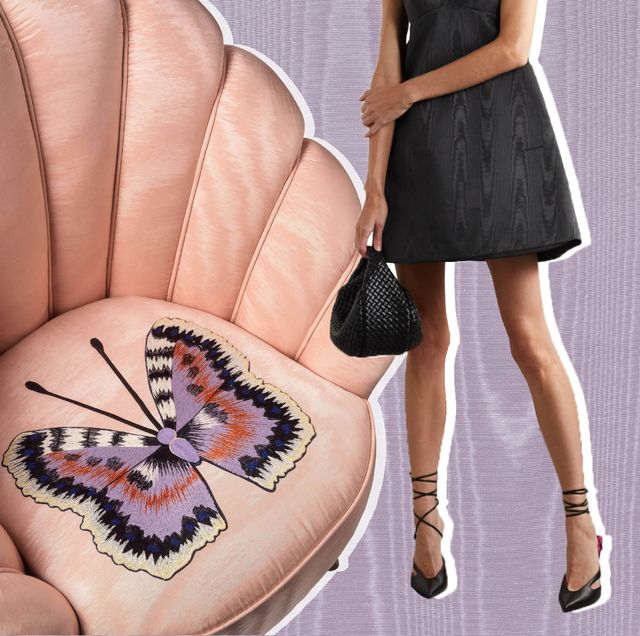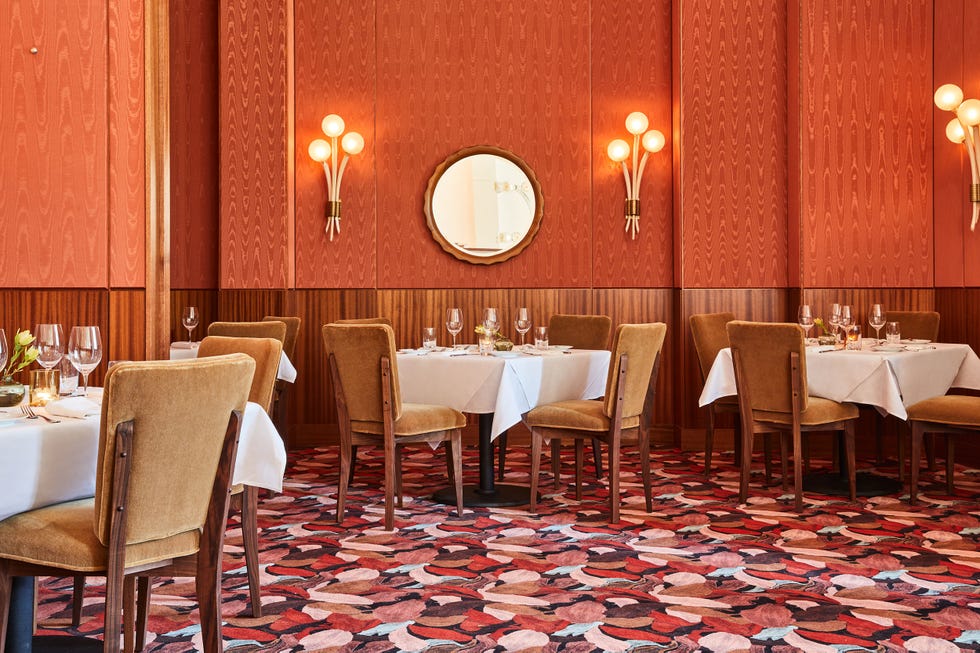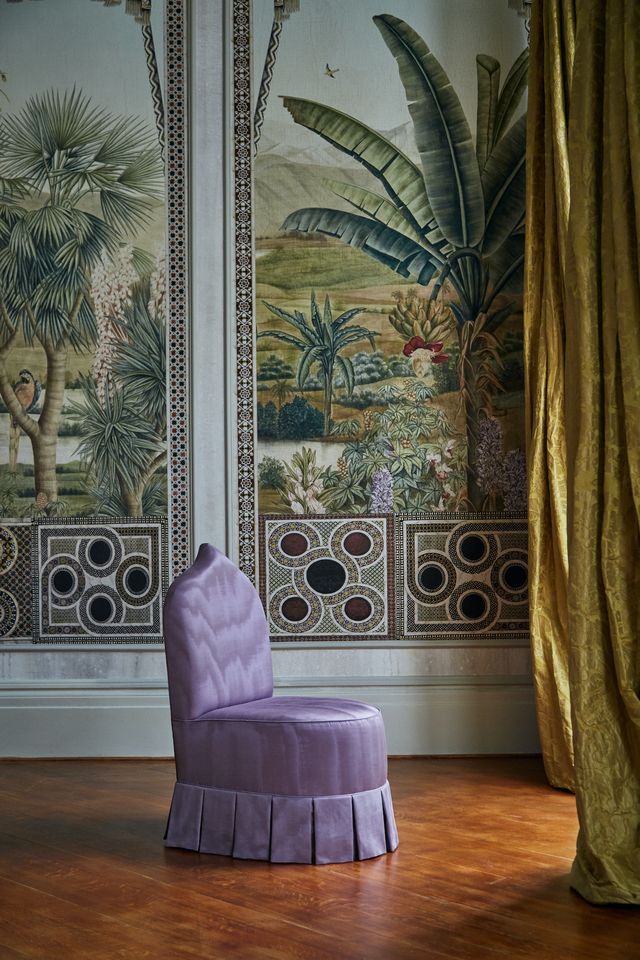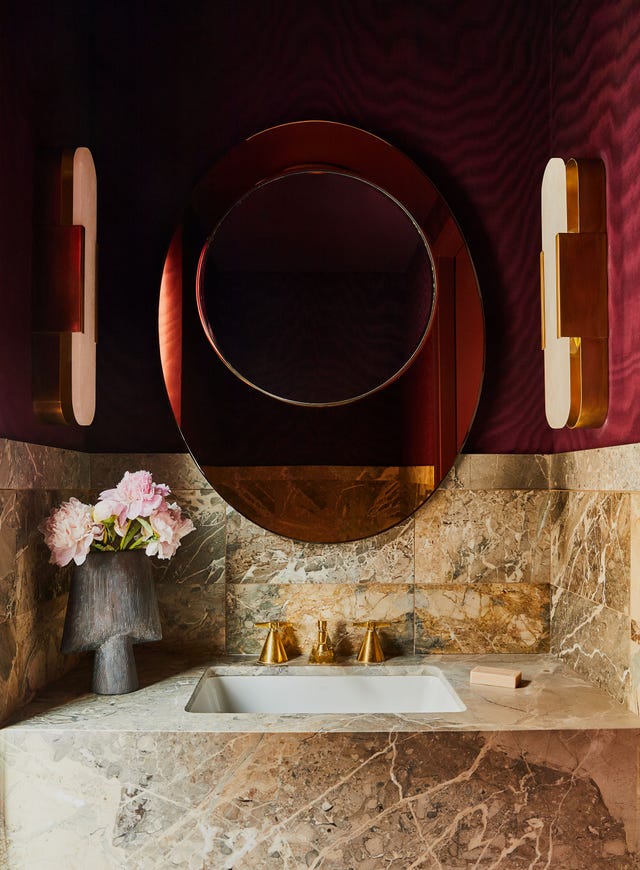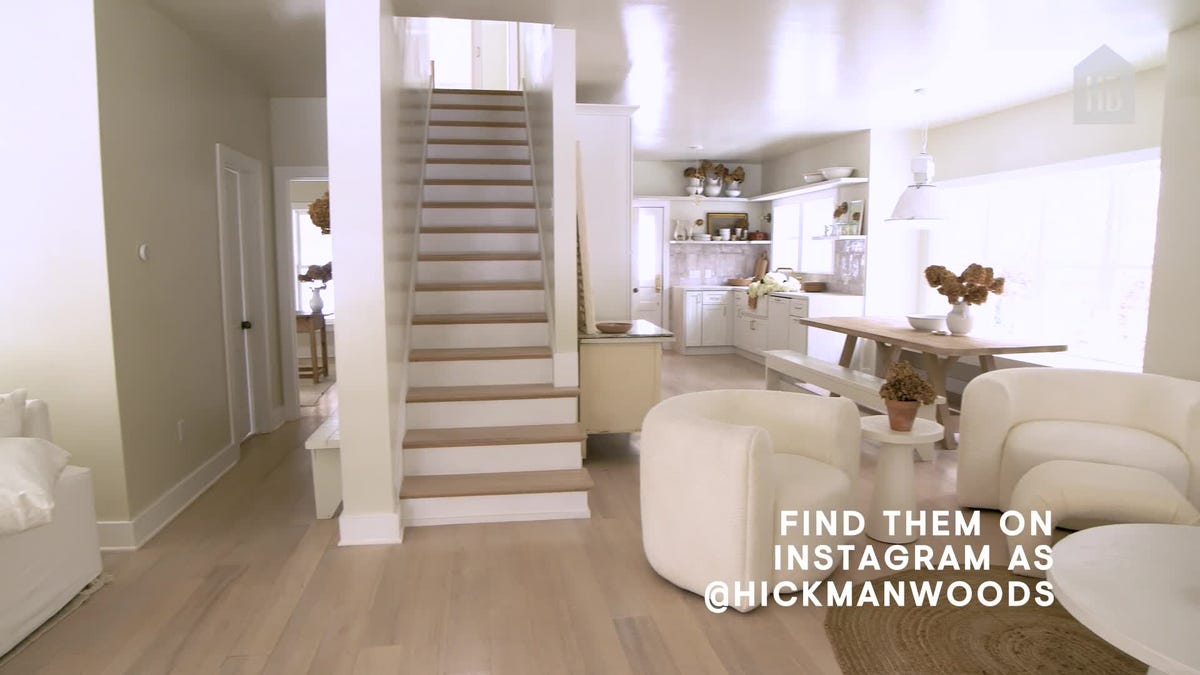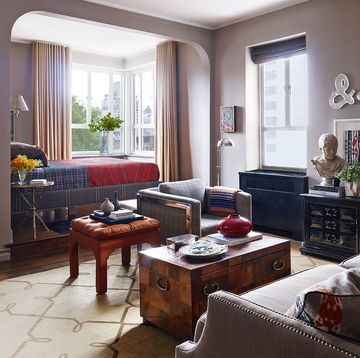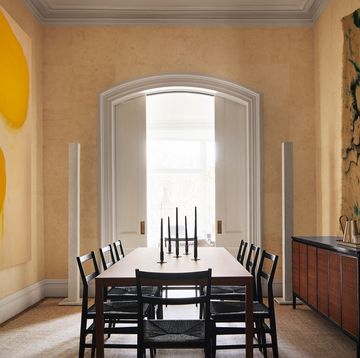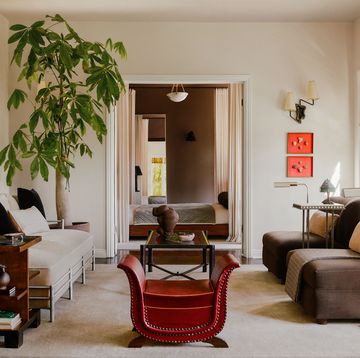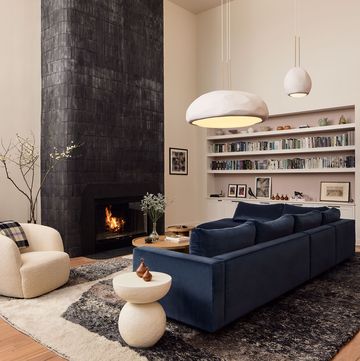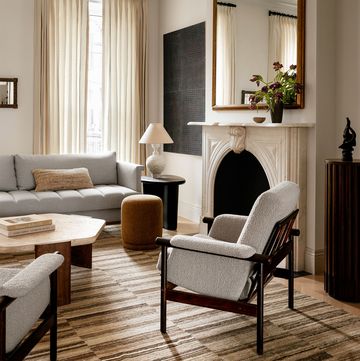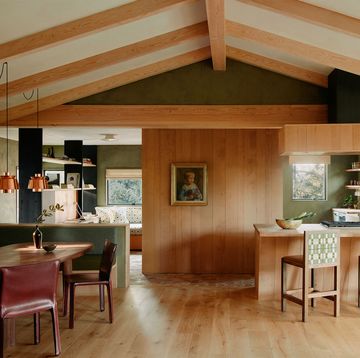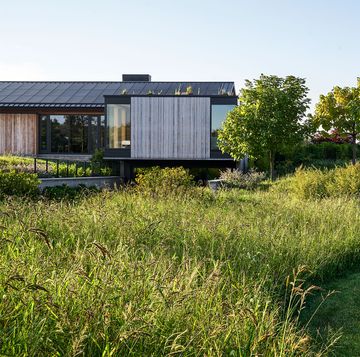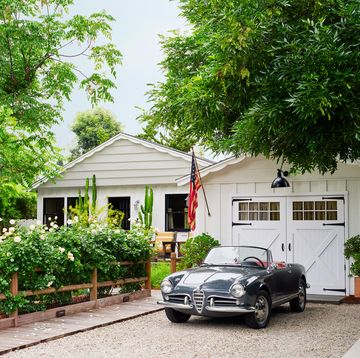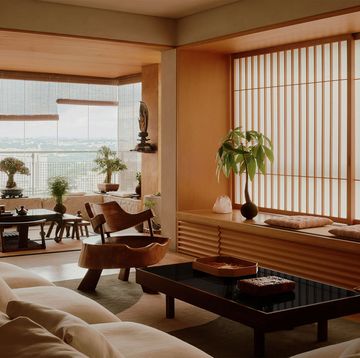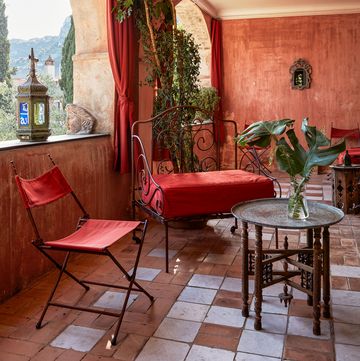From left: A runway look from Christian Siriano’s Spring/Summer 2022 collection, a moiré armchair from Gucci home, and a mini dress by designer Brandon Maxwell.
Picture a shimmering fabric with a subtle wave pattern, and perhaps you’ll imagine an 18th-century portrait painting of a stylish aristocrat wearing a voluminous silk dress. Or the grand wall coverings of a gilded royal bedchamber. You might even picture a deep purple Jessica McClintock prom dress from the 1980s. In all three cases, you’re likely envisioning moiré fabrics, a rippling silk textile that has come to connote very specific periods in history. As it happens, we’re living through one right now.
A brief history: Moiré fabric was likely first developed in Europe as early as the 18th century. Its signature wood grain appearance was initially achieved by pressing and steaming two layers of horizontally ribbed fabric together lengthwise. The ribs that were out of alignment yielded a characteristic wavy pattern; this technique was referred to in English as “watered silk,” and yielded the French term “moiré.” Today, the look of moiré can be achieved through printing and weaving. But to achieve the real thing, the painstaking original technique, referred to as moiré antique, must be used. For the 2014 refurbishment of the Cumberland Art Gallery at Hampton Court Palace, for instance, U.K.-based Humphries Weaving crafted wall coverings in historic shades of crimson and blue using technology that wouldn’t have been out of place during the reign of King William III.
Looking ahead to 2022—from fashion runways to dazzling new restaurants—this particular iteration of William and Mary chic is officially back. After a lengthy absence, moiré seems to be everywhere. Chromophilic designer Christian Siriano has unveiled a caped ensemble set in lime green moiré, while Tanya Taylor’s pre-fall 2022 collection features painterly, textured clothes in taffeta with plenty of ruffles. You can dip your toe into moiré with a pair of J. Crew shoes, or commit head-to-toe in a sleek little black dress by Brandon Maxwell. The pattern has even emerged as a standalone element, decoupled from the traditional silk: This Schumacher throw is woven from merino wool with a moiré design, akin to the use of faux bois.
Designer Robert McKinley used moiré fabric on the walls at the new Sant Ambroeus location in New York’s Financial District, finding it an elegant way to make a particular kind of luxurious glamour legible in a modern context. “I was always inspired by the details of classic European textiles and their various applications. From Italy’s impressive theaters and 18th- and 19th-century cafés to classic evening and formalwear, moiré has always been an elegant yet versatile fabric that stood out for me,” McKinley tells ELLE DECOR. “When I chose the moiré specifically for the dining room walls, I wanted to go for something that people would recognize and connect to in some distant way that hasn’t been looked at in 20 or 30 years.”
And it’s not just appearing on stylish walls: Design duo Duncan Campbell and Charlotte Rey have upholstered their new Fabrizia cocktail chair for the Invisible Collection in an Amoir Libre moiré fabric by Dedar (the color, a vibrant lavender, is called Parme.) Why this fabric on a chair with an ogee arched back and pleated skirt? Campbell says the layered nature of time periods associated with moiré made it the perfect choice for this project: “When designing the Fabrizia chair, we thought of the elegance of the back of a Jean-Antoine Watteau gown, juxtaposed with a the geometric punch that [legendary British decorator] David Hicks’s interiors conjure, so it seemed right to look toward a fabric that felt historically anchored and light, while also being fun and irreverent.”
Charlotte Rey adds that objects don’t need to be fusty or old-fashioned to appeal to our desire for a sense of permanence. “We like to think of all our furniture pieces as future heirlooms and love the idea that they could be enjoyed by one generation and then handed down to the next. Moiré is simply a gorgeous fabric and it’s very versatile. And as we look toward more layered interiors, moiré is a wonderful choice of fabric as it’s chic and decorative without being frilly or chintzy.”
Designer Fiona Leahy is in the process of lining the walls of her own London bedroom with moiré fabric, and her choice to use it is as much poetic as it is aesthetic. Last summer her house flooded (she likens it to a scene from Parasite), and her bedroom walls needed to be totally refurbished. Both because it signals feminine refinement and in a cheeky nod to the mishap that triggered the redecoration, “watered silk” was a perfect solution. In addition to the walls, the bed frame and curtains will be pale pink moiré. “I am really hesitant to use much pattern in my home,” Leahy says, “but for me moiré is almost an invisible pattern, more like the illusion of a shadow, which I really love.”
And on top of that, the fabric seems to signal posh festivity. “The appeal of moiré is that I always associate it with a good time,” Leahy adds. “It is an evening dress or a beautiful ribbon, or the wall of a palace or a stately home. I also like the idea that the walls of my room are always dressed for a ball—even when I am happily hibernating.”
